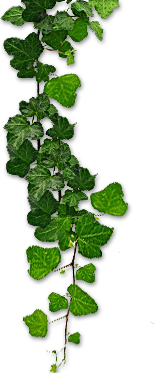
Jeonju Hanok Village
April 29th, 2025
Of course, I wanted to stay in a traditional Korean house (hanok) while in Korea! I just had to try it ;) So, I went to Jeonju, because it has the largest and best-preserved hanok village in the country.
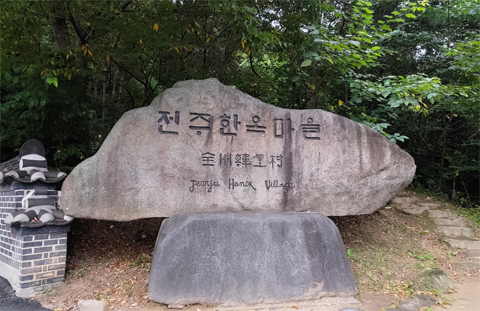
Jeonju is the capital of North Jeolla Province. It has its own unique atmosphere where the past and present coexist in harmony. During the Joseon era, Jeonju emerged as an important city, serving as a center of politics, culture, and education. King Taejo, the founder of the Joseon Dynasty, was born there, which is why Jeonju is regarded as the birthplace of the Joseon royal dynasty. Additionally, Jeonju Hyanggyo, one of the most renowned Confucian schools in Korea, is located in this city.
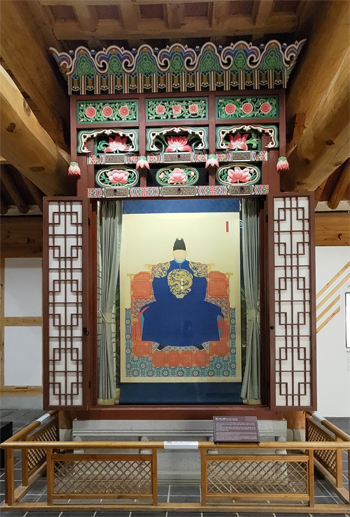
Jeonju Hanok Village is really impressive. Apparently, it counts over 700 hanok houses! Even the Jeonju train station is shaped like a hanok.
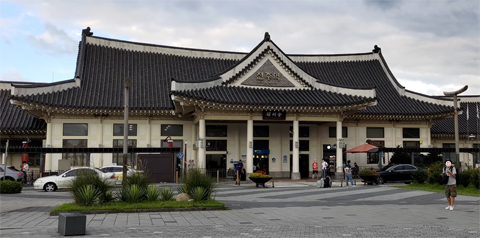
But what’s even more amazing is that Jeonju Hanok Village is not just a historical site; it is an actual village where local families reside permanently, forming a fascinating community that offers visitors a rare glimpse into daily life as it was centuries ago.
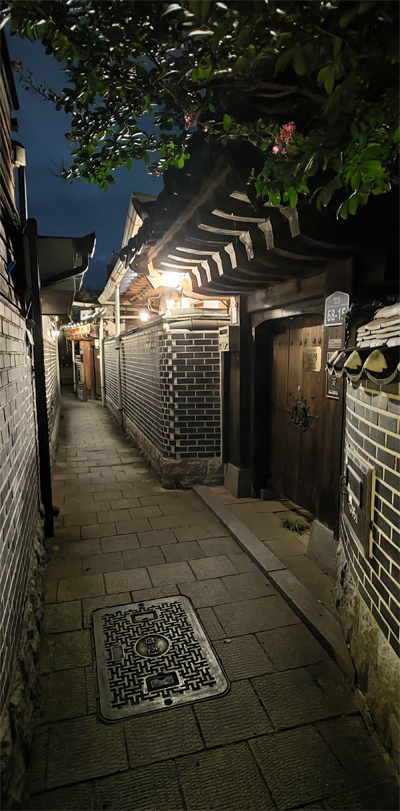
The history of Jeonju Hanok Village dates back to the Joseon Dynasty (1392-1897), the last and longest-ruling dynasty in Korea. The Joseon Dynasty established much of the foundation for modern Korean culture, and the architecture from this era is exemplified in the hanok. Historically, Jeonju Hanok Village was home to scholars, aristocrats, and prominent figures, all of whom contributed to the cultural richness of the area.
I learned that after the Korean War, Jeonju Hanok Village was slowly falling into disrepair, as residents moved to larger cities. But in the 1960s, the government initiated a significant effort to preserve and revitalize traditional elements of Korean culture. So, many of the hanok houses in Jeonju Hanok Village were built or restored during this period.
Since the late 1990s, Jeonju Hanok Village has become a major tourist destination providing an immersive experience of Korea's history alongside the energy of modern-day life. Visitors can enjoy the best of both worlds: the charm of traditional architecture and the comfort of modern amenities. And the local authorities are doing their best to maintain the delicate balance between preserving cultural heritage and facilitating modern development.
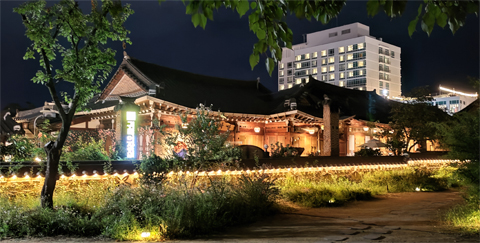
Thus, the village has become a vibrant hub for traditional Korean culture, featuring numerous workshops, restaurants, tea houses, and galleries scattered throughout. Local artisans and craftspeople preserve the essence of traditional Korean art, with stores offering handmade ceramics, traditional hanbok clothing, calligraphy, food, and more.
Of course, there are festivals and performances that everyone can enjoy. I was fortunate to visit Jeonju during the Festival of Traditional Korean Art. In my case, it was a lucky coincidence. It was delightful—I discovered pansori (traditional Korean opera), Korean drumming, and other traditional dances that I absolutely loved!
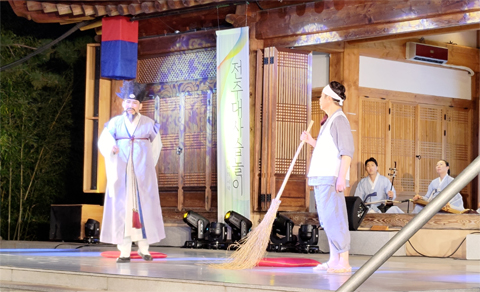
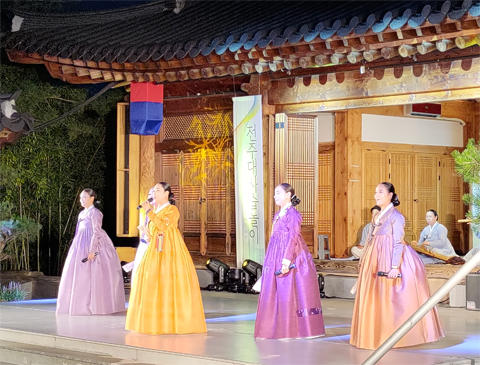
There are many experiences that visitors can enjoy— hanbok rentals, Korean tea ceremonies, archery, tarot readings, clairvoyance, and even the opportunity to create traditional Korean paper.
Another cool fact about Jeonju is that it’s the birthplace of bibimbap! The owner of my hanok gave me the address of the restaurant where bibimbap was invented. It’s called Hankookjib and has been serving bibimbap since 1952, spanning three generations! The complete story is written on the placemats—I won’t spoil it for you ;)
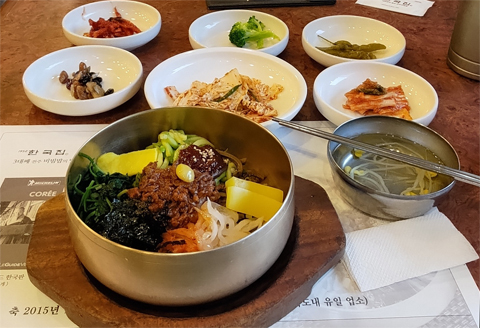
I heard there is also a festival dedicated to bibimbap in Jeonju. It is held annually and allows visitors to taste different versions of this delicious mixed rice dish.
Another exciting local event is the Jeonju Hanji Festival. It celebrates Jeonju’s famous handmade paper—hanji. (BTW, there is a Hanji Museum in Jeonju as well. It is on my list to visit next time). The Jeonju Hanji Festival features paper-making crafts, workshops, and exhibitions.
The main landmarks within Jeonju Hanok Village are:
- Gyeonggijeon Shrine (경기전): This shrine is almost like a small palace. It is dedicated to the portrait of King Taejo. The shrine itself is a beautiful example of Joseon-era architecture; it has many picturesque spots, and many films and dramas used it as a filming location.
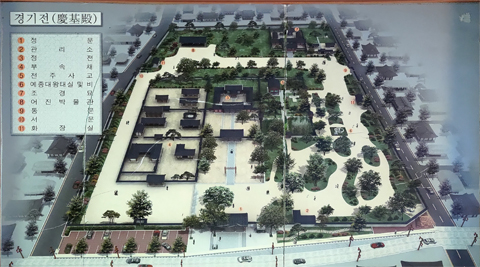
- Jeondong Catholic Church (전동성당): Built in 1914, this Catholic
church combines traditional Romanesque styles with Korean
architectural influences. Its location among traditional hanok
houses highlights Jeonju’s cultural diversity.
- Omokdae and Imokdae: These two hills provide stunning panoramic views of the village and are historically significant as the locations where the famous scholar Yi Seong-gye, who later became King Taejo, is said to have observed the military training of his soldiers.
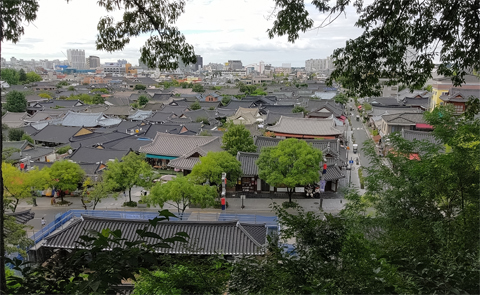
Other landmarks that I loved include Jaman Mural Village, Choka Café, the House of the Last Imperial Grandson of the Joseon Dynasty, the Jeonju Confucian School, and a ginkgo tree over 600 years old on Ginkgo Tree Avenue.
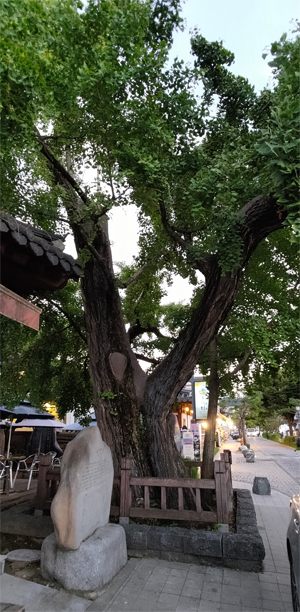
Seriously, every house and every corner of Jeonju Hanok Village is picturesque and instagrammable! I spent four days there and loved every moment :)
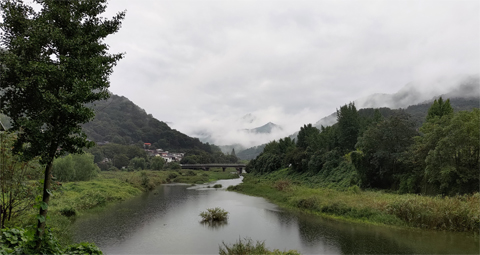
P.S. You can read about my impressions of the hanok stay here ;-)
__________
Categories: My trip to South Korea, Inspiring, Miscellaneous